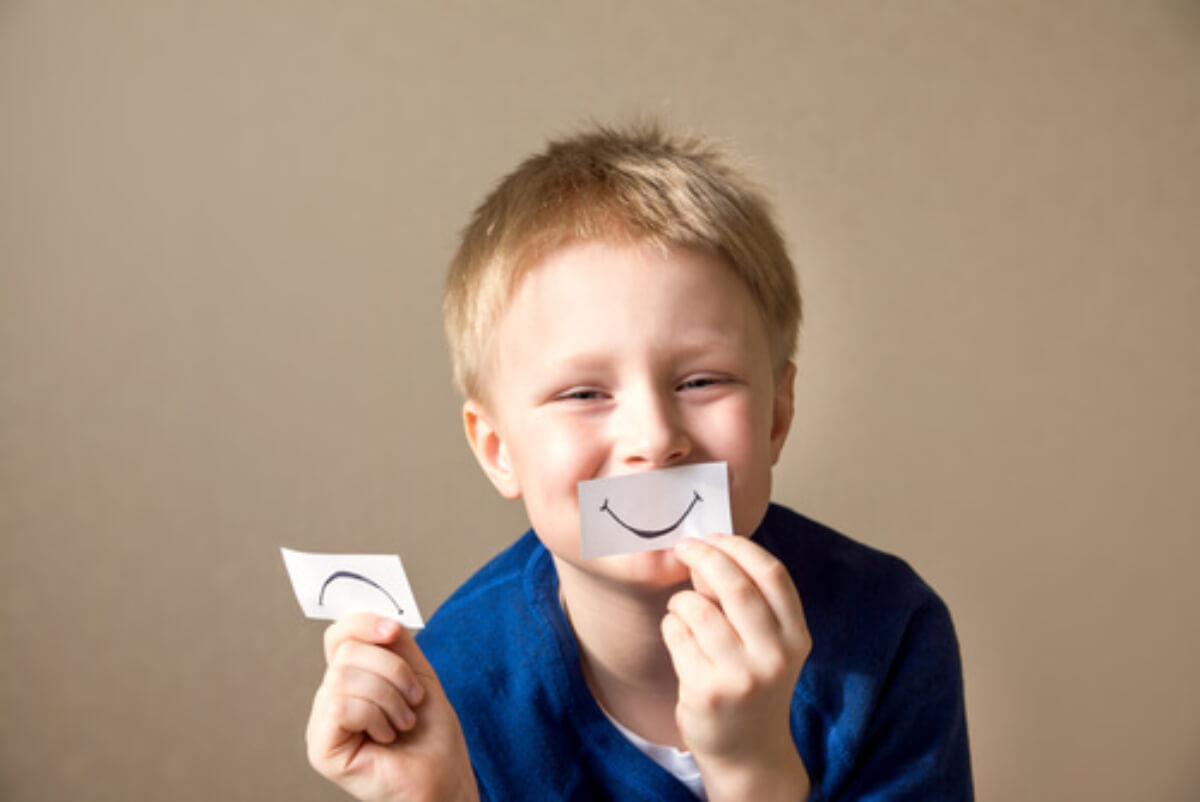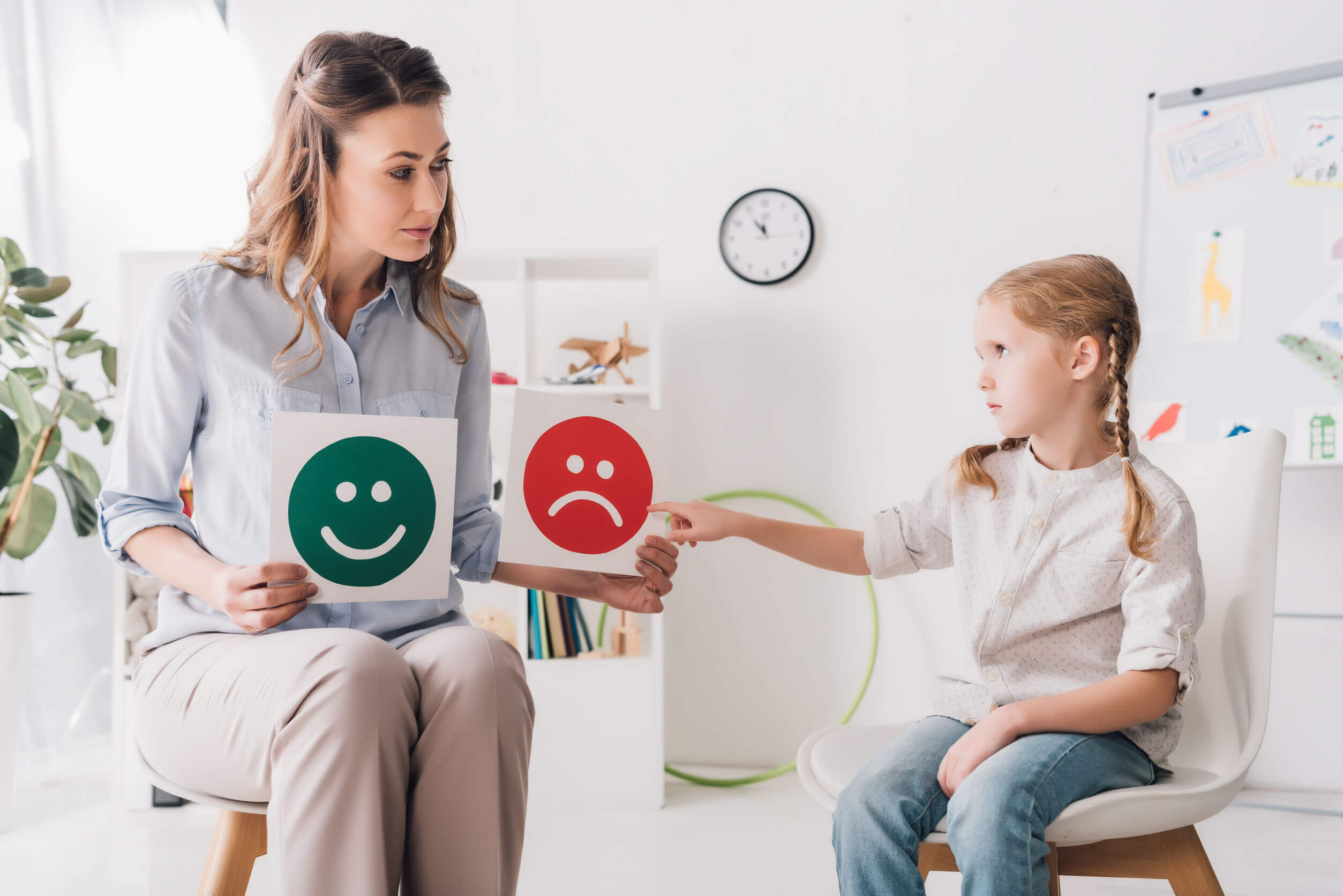Discover 7 Psychological Games for Children


Written and verified by the psychologist Mara Amor López
Psychological games for children are widely used in psychological therapy, as they help build a good therapeutic alliance. Working with children in consultation isn’t the same as working with adults, and little ones need tools that draw their attention and help them express themselves in therapy.
These psychological games or dynamics help professionals relate to children in such a way that they don’t fear or mistrust them. You shouldn’t forget that children don’t come to therapy voluntarily and that they may consider the psychologist a stranger. With these tools, we facilitate the interactions of children with the specialist.
What are psychological games for children?
Psychological games for children are techniques used so that the psychology professional can approach the minor and learn more about them. It’s a way of eliminating the communication barriers that exist with little ones, as they’re not capable of expressing their emotions as an adult would. Thanks to these dynamics, it’s possible to know how the child feels and investigate the problem.
Another of the purposes that are intended with these games is that children don’t see the psychologist’s office as “another school” in which they’re going to have to do work. With these dynamics, they’re provided with a more playful environment and a more attractive therapy. Psychological games help unblock children’s emotions, build trust with the therapist, help establish a good bond, and, in addition, teach strategies to face their day-to-day life.

These games can be used in children from 4 to 11 years old. Through them, you can find out their level of tolerance for frustration, difficulties, and strengths, aggressive behaviors, emotions, fears, social skills, among others.
Each of the dynamics aims to help children express themselves, work through and solve their emotional problems effectively, and help them release them in a constructive way.
The benefits of psychological games for children
Let’s see some of the benefits of psychological games for children:
- They help with conflict resolution: Through play, they’re taught strategies and skills to resolve conflicts.
- They provide social skills: Children are equipped with the most useful skills and techniques to relate appropriately with others, whether with adults or children, in a controlled environment, and that they can then apply to their real lives.
- Emotional management: Children find it difficult to regulate their emotions, as they don’t know their function; through these dynamics, they’re helped to name those emotions and learn the mechanisms to self-regulate them.
- Improved self-esteem: Kids who have low self-esteem, through one of these games, can see what their abilities and strengths are, and this will help them focus on their strengths, thus improving their self-esteem.
- Psychological games help them relax and release tension: Through these games, they learn techniques to relax and channel their tension in a more constructive way.
- They help to establish the bond with the therapist: These games help them not to see the therapist as someone strange, but as someone who helps them feel better, who understands them, and with whom they have a good time.
Some psychological games for children
Now we’re going to see some examples of psychological games for children that are used in therapy, some of them can even be played in a playful way at home and will help everyone feel better.
Story theater
Through stories, values are taught and children are helped to reflect on them, helping them to differentiate between good and bad.
Story theater uses stories with a moral or stories that are unfinished and that children have to provide an ending for. This way, depending on the ending they choose (happy ending or sad ending), professionals can detect if there’s any type of problem in the child, such as depression, anxiety, low self-esteem, among others.
Face chart
This dynamic consists of showing the child a series of faces with different emotional expressions and asking them to indicate how they feel at that moment. This technique helps the child to express how they feel through these faces, as on many occasions, little ones don’t know how to express it.
We can also ask them to imitate the expressions that are shown to them and to look in a mirror so they’ll learn the name of the emotion and what feelings it produces.
Artistic expression
Through shapes, colors, drawings, etc., children can express how they feel, as they don’t know how to do it any other way. To do this, they can be given colors, paint, clay…, so that they can do what they want at that moment. With this, they can transmit a great deal of what they don’t know how to express with words.
Toys with parts
With games such as tangram, jigsaw puzzles, shape sorters, etc., you can develop the child’s motor skills, creativity, hand-eye coordination, visual perception, visual memory, logical reasoning, etc. In addition, they can help detect any sensory or intellectual problems in order to make a more thorough evaluation.

I am…
This game is widely used, especially in cases where there’s a need to increase the child’s self-esteem. This consists of bringing a photo of the little one and pasting it on a piece of cardboard; During the session, the child will indicate different positive qualities and strengths that they have.
You can start with the most basic or physical and then move on to qualities that have more to do with the emotional side (kind, generous, studious, responsible, etc.).
My loved ones
In this activity, the child has to bring photos of their family and friends, or draw them on a piece of paper. They’ll be asked to say what they do with each of them, why they have a good time, who values them, what they don’t like, etc. This game can help detect problems the little one may have with their attachment figures or lack of social skills in their relationship with adults, etc.
About psychological games for children
These psychological games for children that we’ve seen here are just some of those that can be used in consultation, but there are many more. Some of them can also be used by parents at home.
They’re dynamics that help understand emotions and how to express them and improve and develop aspects such as creativity, hand-eye coordination, visual perception, self-esteem, social skills, etc.
We mustn’t forget that young children aren’t capable of expressing their emotions or what they feel in the same way as adults and, through games or playful activities, you can learn much more about them.
Psychological games for children are widely used in psychological therapy, as they help build a good therapeutic alliance. Working with children in consultation isn’t the same as working with adults, and little ones need tools that draw their attention and help them express themselves in therapy.
These psychological games or dynamics help professionals relate to children in such a way that they don’t fear or mistrust them. You shouldn’t forget that children don’t come to therapy voluntarily and that they may consider the psychologist a stranger. With these tools, we facilitate the interactions of children with the specialist.
What are psychological games for children?
Psychological games for children are techniques used so that the psychology professional can approach the minor and learn more about them. It’s a way of eliminating the communication barriers that exist with little ones, as they’re not capable of expressing their emotions as an adult would. Thanks to these dynamics, it’s possible to know how the child feels and investigate the problem.
Another of the purposes that are intended with these games is that children don’t see the psychologist’s office as “another school” in which they’re going to have to do work. With these dynamics, they’re provided with a more playful environment and a more attractive therapy. Psychological games help unblock children’s emotions, build trust with the therapist, help establish a good bond, and, in addition, teach strategies to face their day-to-day life.

These games can be used in children from 4 to 11 years old. Through them, you can find out their level of tolerance for frustration, difficulties, and strengths, aggressive behaviors, emotions, fears, social skills, among others.
Each of the dynamics aims to help children express themselves, work through and solve their emotional problems effectively, and help them release them in a constructive way.
The benefits of psychological games for children
Let’s see some of the benefits of psychological games for children:
- They help with conflict resolution: Through play, they’re taught strategies and skills to resolve conflicts.
- They provide social skills: Children are equipped with the most useful skills and techniques to relate appropriately with others, whether with adults or children, in a controlled environment, and that they can then apply to their real lives.
- Emotional management: Children find it difficult to regulate their emotions, as they don’t know their function; through these dynamics, they’re helped to name those emotions and learn the mechanisms to self-regulate them.
- Improved self-esteem: Kids who have low self-esteem, through one of these games, can see what their abilities and strengths are, and this will help them focus on their strengths, thus improving their self-esteem.
- Psychological games help them relax and release tension: Through these games, they learn techniques to relax and channel their tension in a more constructive way.
- They help to establish the bond with the therapist: These games help them not to see the therapist as someone strange, but as someone who helps them feel better, who understands them, and with whom they have a good time.
Some psychological games for children
Now we’re going to see some examples of psychological games for children that are used in therapy, some of them can even be played in a playful way at home and will help everyone feel better.
Story theater
Through stories, values are taught and children are helped to reflect on them, helping them to differentiate between good and bad.
Story theater uses stories with a moral or stories that are unfinished and that children have to provide an ending for. This way, depending on the ending they choose (happy ending or sad ending), professionals can detect if there’s any type of problem in the child, such as depression, anxiety, low self-esteem, among others.
Face chart
This dynamic consists of showing the child a series of faces with different emotional expressions and asking them to indicate how they feel at that moment. This technique helps the child to express how they feel through these faces, as on many occasions, little ones don’t know how to express it.
We can also ask them to imitate the expressions that are shown to them and to look in a mirror so they’ll learn the name of the emotion and what feelings it produces.
Artistic expression
Through shapes, colors, drawings, etc., children can express how they feel, as they don’t know how to do it any other way. To do this, they can be given colors, paint, clay…, so that they can do what they want at that moment. With this, they can transmit a great deal of what they don’t know how to express with words.
Toys with parts
With games such as tangram, jigsaw puzzles, shape sorters, etc., you can develop the child’s motor skills, creativity, hand-eye coordination, visual perception, visual memory, logical reasoning, etc. In addition, they can help detect any sensory or intellectual problems in order to make a more thorough evaluation.

I am…
This game is widely used, especially in cases where there’s a need to increase the child’s self-esteem. This consists of bringing a photo of the little one and pasting it on a piece of cardboard; During the session, the child will indicate different positive qualities and strengths that they have.
You can start with the most basic or physical and then move on to qualities that have more to do with the emotional side (kind, generous, studious, responsible, etc.).
My loved ones
In this activity, the child has to bring photos of their family and friends, or draw them on a piece of paper. They’ll be asked to say what they do with each of them, why they have a good time, who values them, what they don’t like, etc. This game can help detect problems the little one may have with their attachment figures or lack of social skills in their relationship with adults, etc.
About psychological games for children
These psychological games for children that we’ve seen here are just some of those that can be used in consultation, but there are many more. Some of them can also be used by parents at home.
They’re dynamics that help understand emotions and how to express them and improve and develop aspects such as creativity, hand-eye coordination, visual perception, self-esteem, social skills, etc.
We mustn’t forget that young children aren’t capable of expressing their emotions or what they feel in the same way as adults and, through games or playful activities, you can learn much more about them.
All cited sources were thoroughly reviewed by our team to ensure their quality, reliability, currency, and validity. The bibliography of this article was considered reliable and of academic or scientific accuracy.
- Cabrera Sánchez, A. C. (2008). Manual para trabajar problemas psicológicos con niños, hijos de padres divorciados, basado en la Terapia de Juego (Bachelor’s thesis, Univesidad del Azuay). https://dspace.uazuay.edu.ec/handle/datos/7630
- Duran Santisteban, M. S. (2012). Estructuración y procedimiento de la caja de arena como una técnica alternativa de la terapia de juego con niños de 7 a 9 años (Doctoral dissertation, Universidad de San Carlos de Guatemala).
- Esquivel, F. (2000). Psicoterapia infantil con juego: casos clínicos. Editorial El Manual Moderno.
- García, A. F. S. (2012). El cuento como herramienta psicoterapéutica en el manejo emocional de niños con discapacidad. Revista electrónica de psicología Iztacala, 15(4), 1209-1223.
- Kaduson, H. G. (2012). Terapia de juego de liberación. La obra que usted tiene en sus manos posee un gran valor. En ella, su autor ha vertido conocimientos, experiencia y mucho trabajo. El editor ha procurado una presentación digna de su contenido y está poniendo todo su em-peño y recursos para que sea ampliamente difundida, a través de su red de comer-cialización., 105. http://students.aiu.edu/submissions/profiles/resources/onlineBook/L5U5p3_terapia%20de%20juego-2012.pdf#page=116
- Rago Orrego, N. K. (2017). Niños que no juegan Importancia del juego en la clínica psicoanalítica infantil:¿ Qué sucede cuando hay dificultades para elaborar el juego en la consulta psicológica infantil? https://www.colibri.udelar.edu.uy/jspui/bitstream/20.500.12008/18991/1/tfg_natalia_rago.pdf
- Salucci, F., Vergara, L., & Wilson, N. (2015). Modelo Sistémico Relacional y Terapia con niños: Sobre el uso del juego en la terapia sistémica. Pontificia Universidad Católica de Valparaíso.(sp).
- Sweeney, D. S., & Landreth, G. L. (2012). Terapia de juego centrada en el niño. La obra que usted tiene en sus manos posee un gran valor. En ella, su autor ha vertido conocimientos, experiencia y mucho trabajo. El editor ha procurado una presentación digna de su contenido y está poniendo todo su em-peño y recursos para que sea ampliamente difundida, a través de su red de comer-cialización., 129. http://chamilo.cut.edu.mx:8080/chamilo/courses/PSICOPATOLOGIAINFANTIL20193TINDU/document/FUNDAMENTOS_DE_TERAPIA_DE_JUEGO.pdf#page=140
This text is provided for informational purposes only and does not replace consultation with a professional. If in doubt, consult your specialist.








